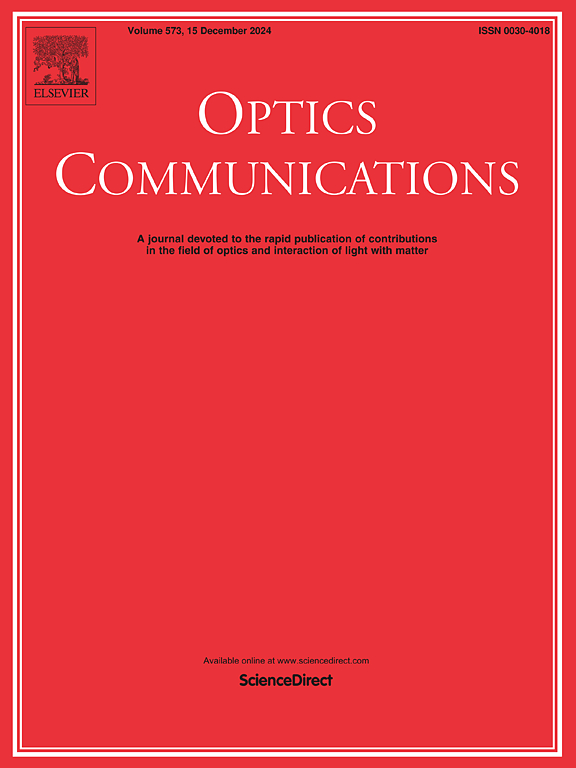基于低语廊和纳米光束模式的对称混合微腔的全光开关
IF 2.2
3区 物理与天体物理
Q2 OPTICS
引用次数: 0
摘要
传统的全光开关依赖于需要高泵浦强度的非线性效应,限制了它们的效率和集成潜力。在这里,我们从理论上提出并在数值上演示了一种利用混合对称的线性全光开关,该开关在一个系统中具有与纳米光束腔耦合的低语通道模式(WGMs)。通过相位控制的对称或反对称wgm的选择性激发,我们可以控制这些模式与纳米束腔的耦合,从而实现发光或抑制。时间耦合模式理论和时域有限差分(FDTD)仿真证实了多功能逻辑门操作和具有任意低能耗、高对比度和皮秒切换时间的超快速切换。此外,还可以通过调节控制光的脉冲持续时间来动态调节开关时间。有趣的是,降低模式质量因子可以加快切换速度,从而简化实验实现。该架构为集成光子电路提供了一种简化、节能和灵活的解决方案,通过放宽制造公差,将稳健的性能与实验可行性相结合。本文章由计算机程序翻译,如有差异,请以英文原文为准。
All-optical switching based on symmetric hybrid microcavities of whispering-gallery and nanobeam modes
Conventional all-optical switches rely on nonlinear effects that require high pump intensities, limiting their efficiency and integration potential. Here, we propose theoretically and demonstrate numerically a linear all-optical switch utilizing hybrid symmetry in a system with whispering-gallery modes (WGMs) coupled to a nanobeam cavity. Through phase-controlled selective excitation of symmetric or antisymmetric WGMs, we can control the coupling of these modes with the nanobeam cavity, enabling light emission or inhibition. Temporal coupled mode theory and Finite-Difference Time-Domain (FDTD) simulations confirm multifunctional logic gate operations and ultrafast switching with arbitrarily low energy consumption, high contrast, and picosecond switching times. Moreover, the switching time can be dynamically tuned by adjusting the control light’s pulse duration. Interestingly, reducing the mode quality factor accelerates the switching speed, which eases experimental implementation. The proposed architecture offers a simplified, energy-efficient and flexible solution for integrated photonic circuits, combining robust performance with experimental feasibility through relaxed fabrication tolerances.
求助全文
通过发布文献求助,成功后即可免费获取论文全文。
去求助
来源期刊

Optics Communications
物理-光学
CiteScore
5.10
自引率
8.30%
发文量
681
审稿时长
38 days
期刊介绍:
Optics Communications invites original and timely contributions containing new results in various fields of optics and photonics. The journal considers theoretical and experimental research in areas ranging from the fundamental properties of light to technological applications. Topics covered include classical and quantum optics, optical physics and light-matter interactions, lasers, imaging, guided-wave optics and optical information processing. Manuscripts should offer clear evidence of novelty and significance. Papers concentrating on mathematical and computational issues, with limited connection to optics, are not suitable for publication in the Journal. Similarly, small technical advances, or papers concerned only with engineering applications or issues of materials science fall outside the journal scope.
 求助内容:
求助内容: 应助结果提醒方式:
应助结果提醒方式:


